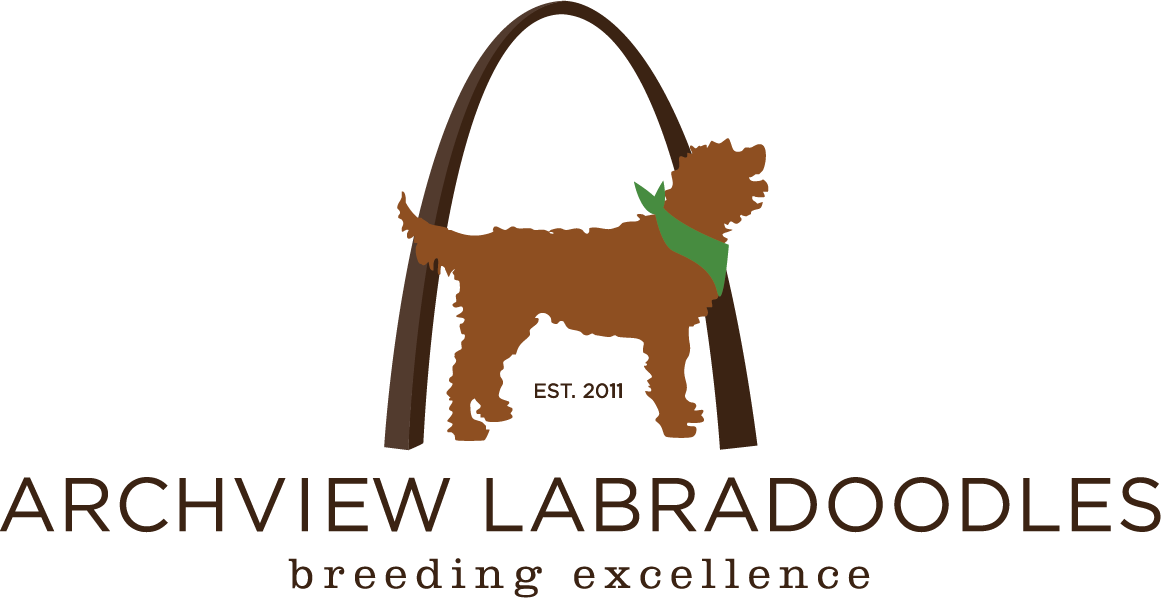Apply for a puppy from one of our litters today. Don't delay, we fill up fast.
Labradoodle Colors
Australian Labradoodle coat colors (colours) come in a wide variety of options. Below is a listing of the different coat colors, coloring descriptions and what to expect with their coats throughout their lifetime.
Caramel
Caramel colored dogs have liver noses (brown). Their range of coat color can vary between light yellow to almost red in hue. The difference in a caramel dog and a chalk, cream, apricot and red dog is their nose color.
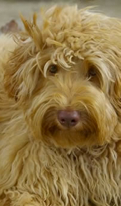
Chocolate
True chocolates are brown in color. Many chocolates do fade over time.

Cream
This color comes in a wide variety of shades but it should be creamy in appearance. It can have tinting of gold/apricot. The nose pigment is black.
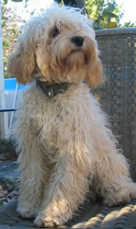
Gold/Apricot
The color has been referred to as “apricot” because the standard calls for the color to resemble the inside of a ripe apricot to varying shades of rich dark gold. The pigment for the nose is black.

Parchment
This color is a creamy beige chocolate color. It has been described as a cup of coffee with a generous addition of milk. These dogs are born milk chocolate and will develop their parchment coloring over time. The nose pigment is rose.
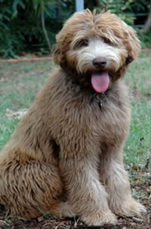
Red
True reds should be rich and dark in color and the roots should be no lighter. Sadly, this coat color tends to fade over time. The nose color is to be black.

Café
This color can range between a light milk chocolate to an almost beige. This color develops over the first 1-3 years. Nose pigment should be rose.

Chalk
This color is a white looking color. However, if you were to compare it to a true white, it would appear to be more chalk-white in color. Nose pigment is black.
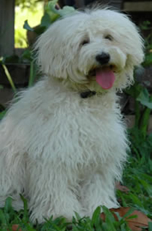
Black
Black Labradoodles should be solid in color with no sprinklings of other colors throughout the coat. Their pigment color should be black.

Silver
These pups would start out black and their silver coloring develops over the first few years of their lives. The color range can be anywhere from a light pewter to a dark charcoal. Ideally, the color should be solid, but it’s acceptable to have uneven layering of color in the coat. Silver dogs need to have black pigmentation.

Blue
These pups are born black with blue/grey pigmentation. The blue coat will develop over the first few years. The color should be solid once they are full grown. It should be a dark-medium smoky blue.

Lavender
This color has a smoky lavender chocolate coloring that almost gives off a pink to lilac appearance. These pups are born chocolate and will come into their beautiful lavender coats over the first few years. Their pigmentation should be rose in color.

Parti
These dogs need to be at least fifty percent white, with spots or patches of any other above solid color. Full or partial saddles are acceptable, but are not preferred. Ticking in the white of the coat is acceptable but not preferred. The nose pigment needs to match the solid color.
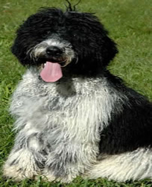
Phantom
Phantom colored dogs have a solid base color with sharply defined markings of a second color appearing above each eye, on the sides of the muzzle, on the throat/ forechest, on all four legs and feet, and below the tail. Any combination of acceptable colors is allowed. Nose pigment should follow requirements listed above based on the solid base color.
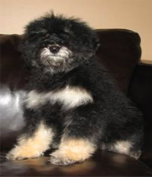
Information and photos republished with permission from Australian Labradoodle Association
